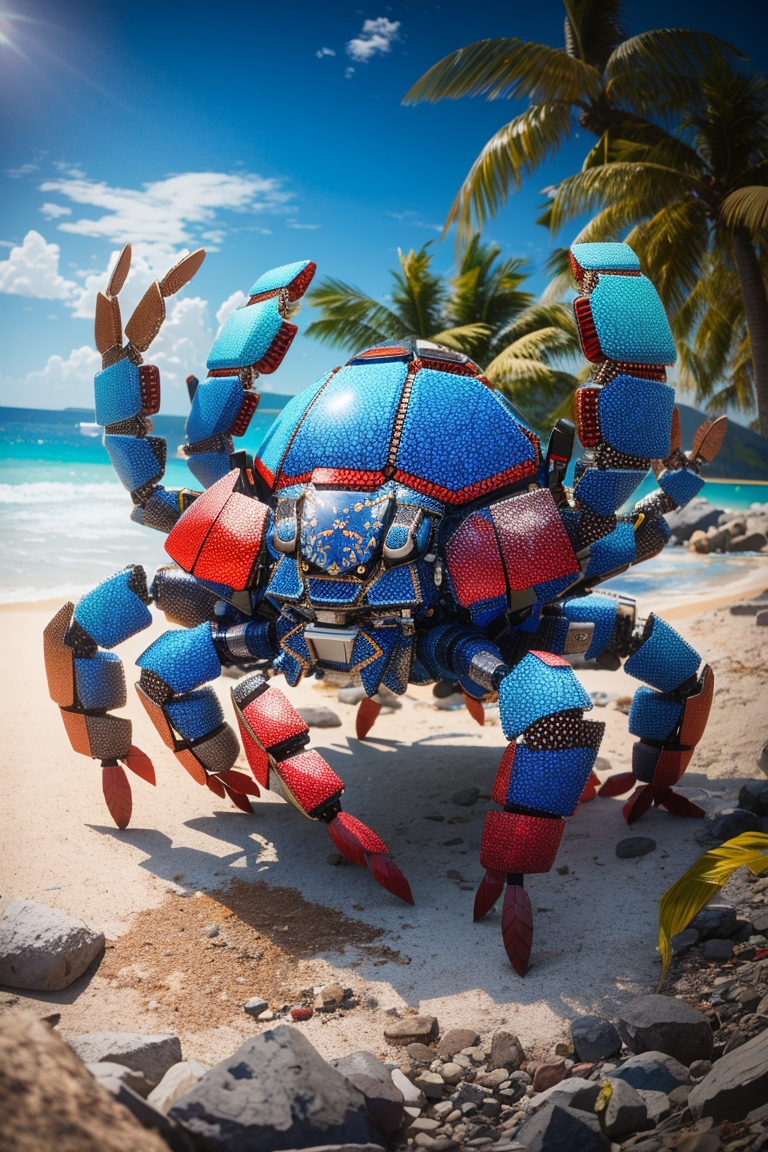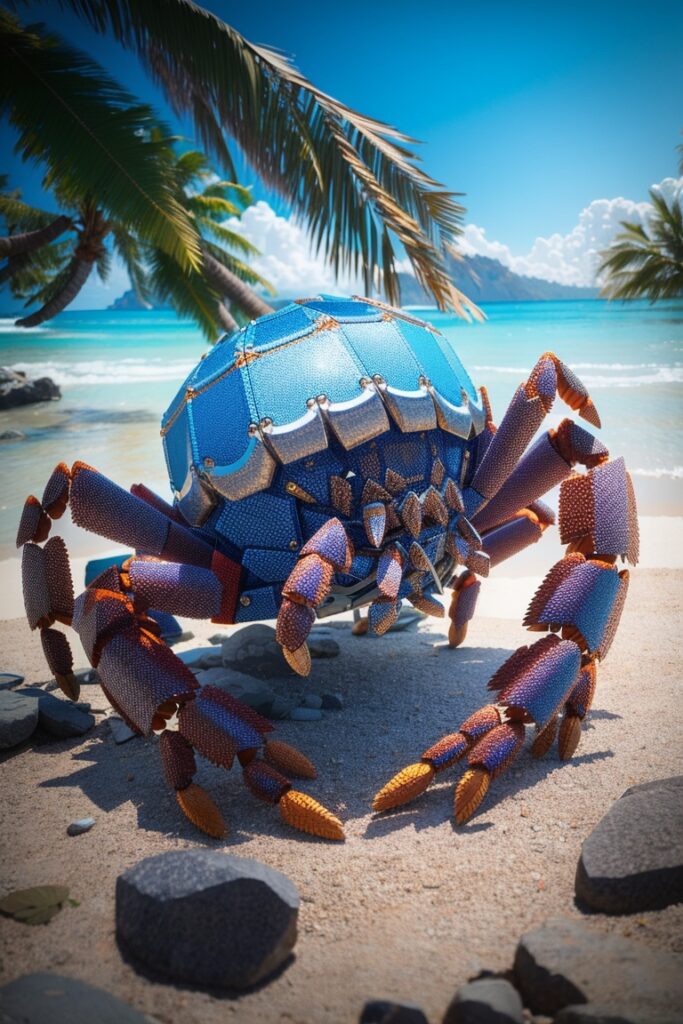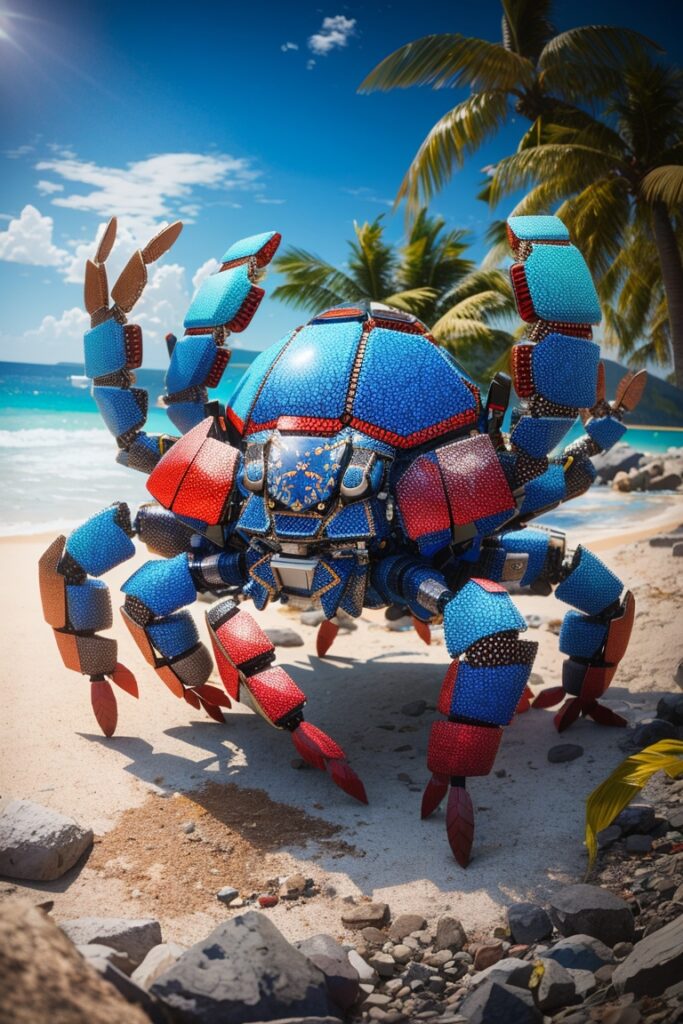
coconut crab
Introduction
The coconut crab, also known as the robber crab or palm thief, is a fascinating creature that dwells in the tropical islands of the Indian and Pacific Oceans. Renowned for its massive claws and mysterious nature, the coconut crab has captured the curiosity of researchers and nature enthusiasts alike. In this article, we will delve into the secrets behind the coconut crab’s impressive claws and explore various aspects of its life and habitat.
Appearance and Behavior
With a leg span of up to three feet and a weight that can reach over nine pounds, the coconut crab is the largest land-living arthropod on Earth. Its distinctive feature is its massive claws, which can exert a force of over 3000 Newtons, enabling the crab to crack open coconuts with ease. These powerful claws serve not only as tools for feeding but also for defense and territorial disputes.

The coconut crab has a reddish-brown exoskeleton that helps it blend in with its surroundings. During the day, it usually hides in burrows or crevices to avoid predators and extreme temperatures. However, as night falls, it becomes more active, scavenging for food and exploring its surroundings. Despite its intimidating appearance, the coconut crab is generally shy and non-aggressive towards humans.
Habitat and Distribution
The natural habitat of the coconut crab consists of coastal areas, including beaches, rocky shores, and mangrove forests. It requires access to both land and sea, as it needs to breathe air but also relies on the ocean for reproduction. These crabs are mainly found on remote islands in the Indian and Pacific Oceans, such as the Seychelles, Christmas Island, and parts of Polynesia.
Feeding Habits
The coconut crab is an omnivorous scavenger, feeding on a wide range of food sources. While it primarily consumes fallen fruits, nuts, and decaying plant matter, it is also known to be opportunistic and will occasionally prey on small animals. The crab’s powerful claws allow it to crack open coconuts and extract the nutritious flesh, making it an essential part of its diet.
Growth and Reproduction
Coconut crabs undergo a series of molting stages as they grow. During molting, they shed their exoskeleton to allow for growth. The process can take several weeks, leaving the crab vulnerable until its new exoskeleton hardens. Sexual maturity is reached around five to seven years of age, and the crabs are known for their longevity, with some individuals living for several decades. During the mating season, male crabs engage in fierce battles to win the favor of females.
Ecological Importance
The coconut crab plays a significant role in its ecosystem. As a scavenger, it helps to clean up decaying organic matter, contributing to nutrient recycling. The crab’s burrows also serve as homes for various other species, creating microhabitats within its environment. Additionally, the coconut crab’s feeding habits contribute to seed dispersal, aiding in the regeneration of plant populations.
Conservation Status and Threats
While the coconut crab is not currently listed as endangered, its populations are vulnerable to human activities and habitat loss. Unsustainable harvesting for food and the pet trade pose significant threats to the crab’s survival. Furthermore, the destruction of coastal habitats due to urbanization and pollution has led to a decline in suitable breeding grounds for these remarkable creatures.

Human Interaction
The coconut crab has been a valuable resource for local communities for centuries. In some regions, it is hunted for its meat and considered a delicacy. However, recognizing the importance of conserving this unique species, various conservation efforts have been implemented to protect the coconut crab’s habitats and regulate its harvest. Conservation organizations and local authorities work together to raise awareness and promote sustainable practices.
Conclusion
The coconut crab remains a fascinating enigma, with its massive claws and intriguing behaviors captivating those who encounter it. Its crucial role in its ecosystem and its unique adaptations make it a species worthy of our attention and conservation efforts. By understanding and appreciating the mysterious coconut crab, we can ensure its survival for future generations to marvel at.
FAQs (Frequently Asked Questions)
- How big can a coconut crab grow?
- Coconut crabs can have a leg span of up to three feet, making them the largest land-living arthropods.
- Are coconut crabs dangerous to humans?
- While coconut crabs have powerful claws, they are generally non-aggressive towards humans unless provoked.
- Can coconut crabs swim?
- Although they are primarily land-dwelling, coconut crabs can swim and require access to both land and sea for their survival.
- Are coconut crabs endangered?
- Coconut crabs are currently not listed as endangered, but their populations are at risk due to habitat loss and overharvesting.
- What is the lifespan of a coconut crab?
- Coconut crabs have a long lifespan and can live for several decades, with some individuals reaching 60 years or more.



